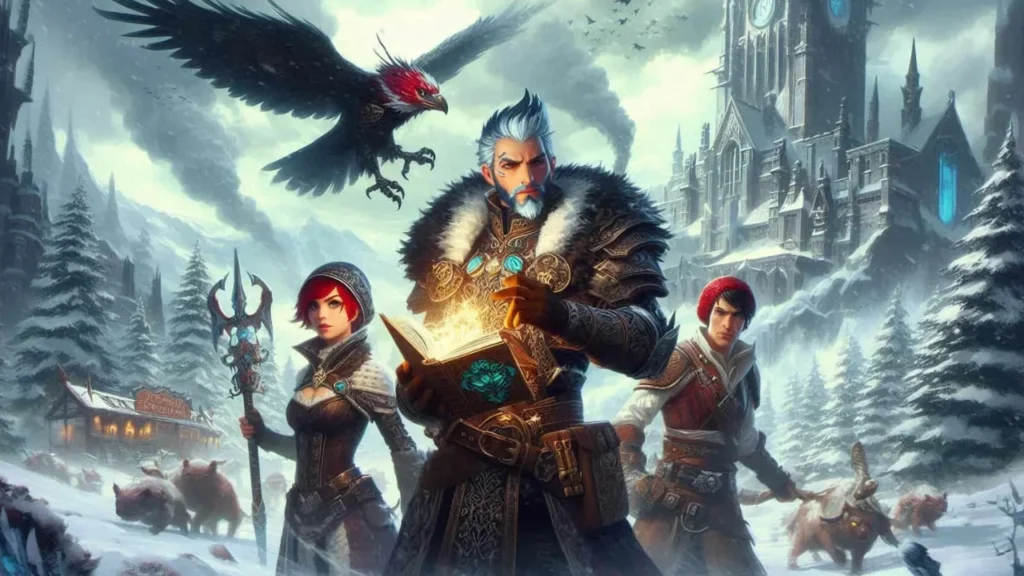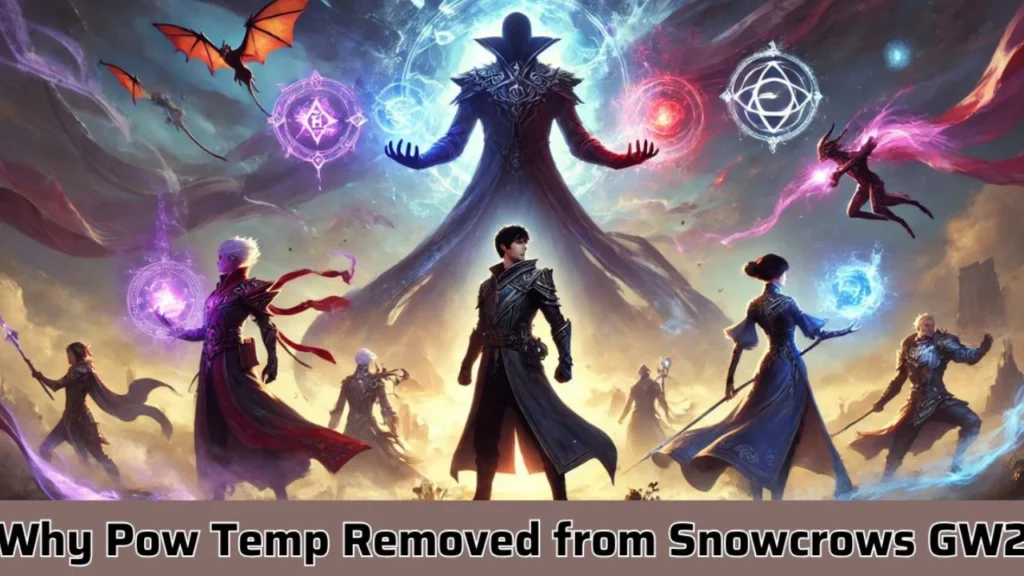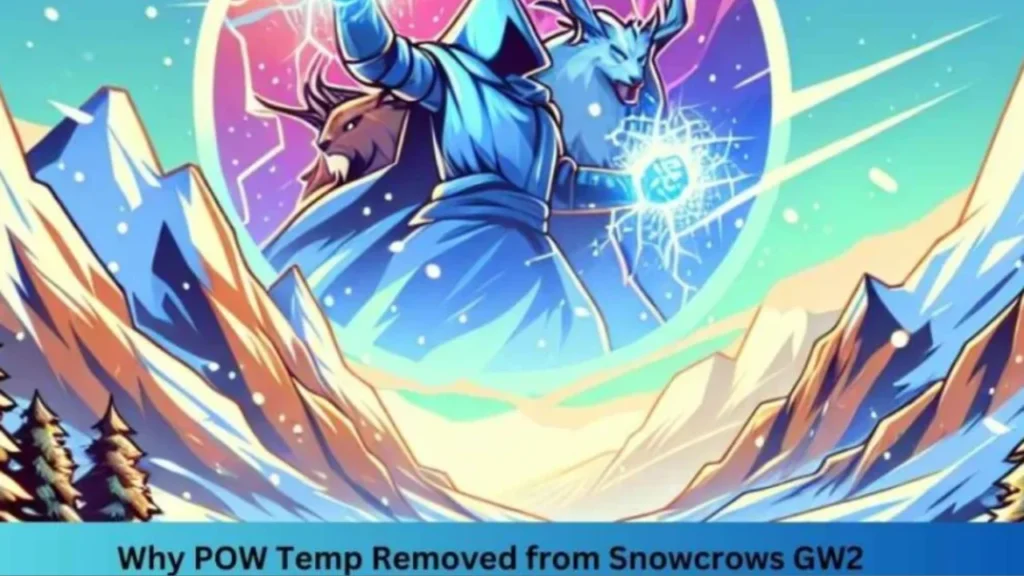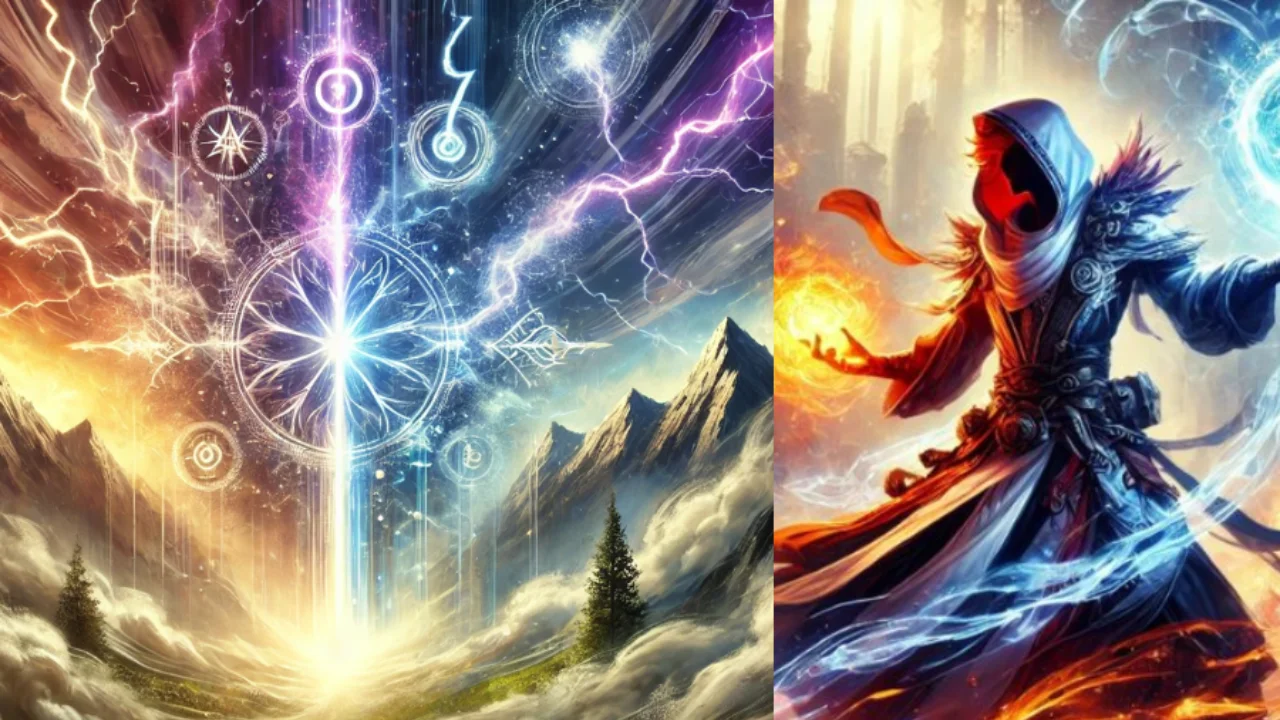Why Power Tempest Removed From Snowcrows GW2: Understanding, Retired Power Tempest, Key Insights And More
Why Power Tempest Removed From Snowcrows GW2: Snow Crows stands as a trusted resource for Guild Wars 2 players, providing well-optimized builds for challenging PvE activities like raids, fractals, and strike missions. Known for its rigorous testing and benchmarking standards, the platform ensures players can unlock the full potential of their characters. However, recent updates have raised questions about the removal of Power Tempest from Snow Crows’ recommended builds.
Understanding the Power Tempest in Guild Wars 2
First introduced in the Heart of Thorns expansion, the Tempest specialization brought new depth to Elementalists by enabling attunement overloading. This ability offered significant boosts to a team’s damage, healing, and utility. Among its many variations, Power Tempest gained attention for its capability to deal substantial direct damage, making it a reliable choice in certain PvE scenarios.
Why Snow Crows Retired Power Tempest
While Power Tempest enjoyed popularity during its prime, shifting game dynamics caused its effectiveness to decline. Evolving metas, balance patches, and emerging playstyles highlighted other builds as stronger alternatives. Snow Crows, adhering to its commitment to high-performance and efficiency, made the decision to remove Power Tempest from its recommended setups.
This shift reflects not only the platform’s dedication to keeping its build recommendations competitive but also the ever-changing nature of Guild Wars 2’s gameplay landscape. By phasing out less effective options, Snow Crows ensures that players can rely on the most impactful strategies for their PvE adventures.
Key Insights on the Removal of Power Tempest from Snow Crows
The decision to phase out Power Tempest from Snow Crows’ roster of recommended builds has sparked considerable discussion within the Guild Wars 2 community. Known for its capability to deliver strong damage while supporting team buffs, Power Tempest was once a preferred choice. However, updates and evolving gameplay dynamics led to its decline. Here, we break down the factors behind this significant change.

Why Power Tempest Was Dropped
1. Performance Challenges
In high-level PvE content such as raids and strikes, consistent damage output and utility are non-negotiable. Power Tempest struggled to meet these requirements, falling behind newer, more competitive builds. Its damage potential, once a hallmark of its appeal, no longer kept pace with the demands of endgame encounters.
2. Shifting Game Mechanics
With each update, Guild Wars 2 introduces changes that redefine how players approach encounters. These updates often favor builds that synergize well with newer mechanics. Unfortunately, Power Tempest’s structure and abilities didn’t align with these shifting trends, diminishing its relevance in the current meta.
3. Community Feedback
Snow Crows has always emphasized collaboration and player feedback in its decision-making. The community’s input revealed a preference for builds offering both superior damage and enhanced team utility. Players naturally gravitate toward options that optimize performance, which placed Power Tempest at a disadvantage.
4. Ongoing Balance Updates
Guild Wars 2 frequently introduces balance patches to fine-tune professions and skills. These updates can dramatically alter the effectiveness of certain builds. In the case of Power Tempest, repeated changes eroded its once-strong position, making it less viable compared to emerging alternatives.
The Evolving Meta and Its Implications
The removal of Power Tempest underscores the fluid nature of the Guild Wars 2 meta. As balance updates and gameplay mechanics evolve, builds must adapt to remain effective. Snow Crows and similar platforms play a vital role in guiding players toward the most competitive strategies, ensuring their success in demanding PvE content.
While Power Tempest may no longer be a recommended choice, its legacy highlights the dynamic and ever-changing landscape of Guild Wars 2. This change invites players to explore new builds, adapt their strategies, and remain at the forefront of the game’s competitive environment.
Why Power Tempest Lost Its Place in the Guild Wars 2 Meta
Power Tempest, once a popular build for Elementalists in Guild Wars 2, has gradually faded from prominence. This decline is attributed to several factors, including the emergence of superior builds, challenges in delivering consistent damage, and its vulnerabilities in high-pressure scenarios. Below, we explore the primary reasons behind its removal from Snow Crows’ recommended list and its diminished standing in the game’s competitive PvE meta.
1. Competition from More Effective Professions and Builds
Guild Wars 2 players continually seek high-performance builds that deliver maximum value. Over time, newer options like Catalyst, Mechanist, and Power Daredevil began outperforming Power Tempest in both damage output and utility. These builds provided significant benefits without compromising survivability, making them a natural choice for players aiming to optimize group efficiency.
In challenging PvE content, every group slot is critical. Builds that either maximize DPS or offer exceptional utility take precedence in team compositions. Power Tempest’s inability to match the raw damage of its rivals caused it to lose favor, especially among teams striving for optimal setups.
2. Inconsistent Burst and Sustained Damage
Power Tempest struggled in two key areas essential for high-level PvE success: burst damage and sustained DPS. In encounters requiring rapid elimination of bosses or high-priority targets, the build’s limitations became evident. Its reliance on prolonged casting times and intricate skill rotations made maintaining consistent DPS challenging.
Dynamic combat situations in Guild Wars 2 demand adaptability, including frequent movement, target switching, and quick reactions. Power Tempest’s rigid mechanics left it ill-suited for these scenarios, prompting players and theory-crafting communities like Snow Crows to favor more flexible alternatives.
3. Vulnerability to Interruptions
Elementalists, including Tempests, often have low durability and rely heavily on casting-intensive abilities. Power Tempest, in particular, required uninterrupted skill execution, such as Overloads, which necessitate remaining stationary. In fast-paced PvE encounters where mobility is crucial, Tempests frequently faced interruptions, significantly reducing their effectiveness.
Snow Crows prioritizes builds that offer reliability and consistent performance. Power Tempest’s dependency on uninterrupted casts and its susceptibility to disruptions made it an unreliable option compared to other builds with faster or more adaptable skill rotations.
4. Rise of Other Elementalist Specializations
The introduction of the Catalyst specialization in the End of Dragons expansion reshaped the Elementalist’s role in the meta. Catalyst not only matched Power Tempest’s DPS but also offered a more versatile toolkit, enabling players to adapt to diverse combat scenarios.
With abilities like the Jade Sphere and enhanced attunements, Catalyst provided greater utility, survivability, and mobility—traits that Power Tempest lacked. As a result, many Elementalist players transitioned to Catalyst, further diminishing Power Tempest’s presence in the meta.

The Role of Community Feedback and Game Updates in the Evolution of Guild Wars 2 Builds
In any MMO, player feedback is essential for maintaining game balance and improving gameplay, and Guild Wars 2 is no exception. Over time, the community’s response to Power Tempest has been one of the main factors influencing its decline, as players and raid teams highlighted its diminishing effectiveness compared to newer builds.
Player Discussions and Community Sentimen
Social media platforms, particularly forums like Reddit, have been filled with player discussions about Power Tempest’s waning effectiveness. While it was once a reliable option, many players have pointed out that it no longer provides the same performance, particularly as the game’s meta continues to shift. The general consensus is that Power Tempest struggles to keep up with more recent builds, leading to its decline in popularity.
Additionally, surveys and polls conducted by Snow Crows revealed that most players preferred alternatives that offered superior damage output and more utility. These findings further underscored the community’s preference for builds that better aligned with the demands of endgame content.
The Impact of Competitive Raiding
High-tier raiding teams have also weighed in on the Power Tempest debate. Many players found that while Power Tempest was once a viable option, it eventually became a liability in high-level content. According to these teams, they achieved greater success with builds that focused on either higher DPS or more versatile utility, rather than Power Tempest’s more static and specialized role.
Effects of Balance Updates on Power Tempest
Guild Wars 2 frequently updates its balance, aiming to keep the game dynamic and competitive. Several key updates have had a direct impact on Power Tempest’s effectiveness:
- Skill Adjustments: Over time, core skills for Power Tempest were adjusted, diminishing their potency. Some skills that once generated useful buffs, like Fury or Might, were reduced in effectiveness compared to other optimal builds.
- New Expansions and Specializations: The introduction of End of Dragons and other expansions introduced specializations like Power Herald and Condition Mirage, which quickly surpassed Power Tempest. These new builds brought higher damage output and more utility, making Power Tempest’s place in the meta less secure.
- Meta Shifts: As newer, more competitive builds emerged, players began adapting to these changes, leaving Power Tempest in the rearview. The shift in focus toward builds with higher DPS and better synergy with current raid mechanics pushed Power Tempest out of favor.
Rise of New Builds
With Power Tempest losing traction, a number of new builds have emerged to fill the gap. Notable examples include:
- Power Weaver: Known for its high direct damage and strong team support, Power Weaver became a favorite for aggressive players looking for a competitive edge.
- Condition Mirage: Renowned for its ability to apply conditions while dealing significant damage, Condition Mirage became one of the top choices for raids, offering versatility and high damage potential.
- Power Herald: With its excellent crowd control, support capabilities, and strong DPS, Power Herald quickly gained favor among raid teams seeking a well-rounded build for tackling difficult encounters.

The Future of Guild Wars 2 Builds
As Guild Wars 2 continues to evolve through new balance changes and expansions, players and communities like Snow Crows will continue to shape the game’s meta through ongoing feedback and adaptation. Some key factors influencing future developments include:
- Player Feedback: Community feedback will remain essential in determining the future of builds and balance changes. Developers are likely to continue relying on player input to refine existing builds and introduce new ones that reflect the shifting needs of the player base.
- Exploration of New Builds: With every expansion, players will experiment with new combinations of specializations, leading to the emergence of fresh strategies and builds. This constant cycle of exploration is one reason why the meta in Guild Wars 2 is always in flux.
- Balancing Legacy and New Builds: Striking the right balance between keeping older builds relevant while introducing new strategies will be an ongoing challenge for developers. Ensuring that no single build becomes obsolete will be key to maintaining a diverse and dynamic game environment.
Read More: Peroxide Trello
Final Words
In conclusion, the evolution of builds like Power Tempest in Guild Wars 2 showcases the dynamic nature of the game, where community feedback, balance updates, and the introduction of new expansions continually reshape the meta. Power Tempest’s decline reflects the constant search for optimal performance in high-end PvE content, where players are always looking for builds that offer the best synergy, damage, and utility. As the game continues to evolve, the adaptability of players and the willingness to explore new strategies will be key to staying competitive. The Guild Wars 2 community will always play a central role in guiding the direction of gameplay, ensuring that the game remains fresh, exciting, and balanced for all players.
For More Information Check It Out LepBound






